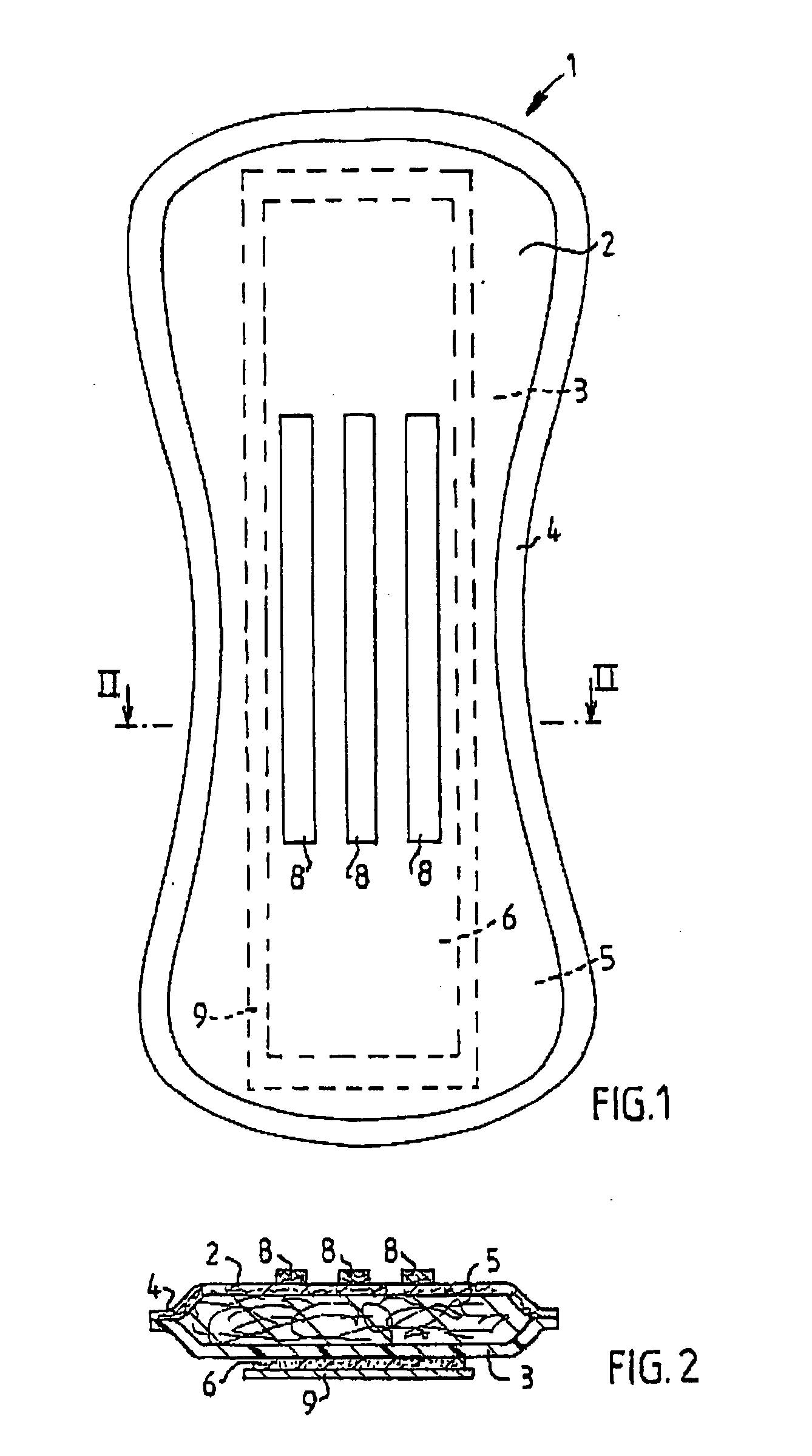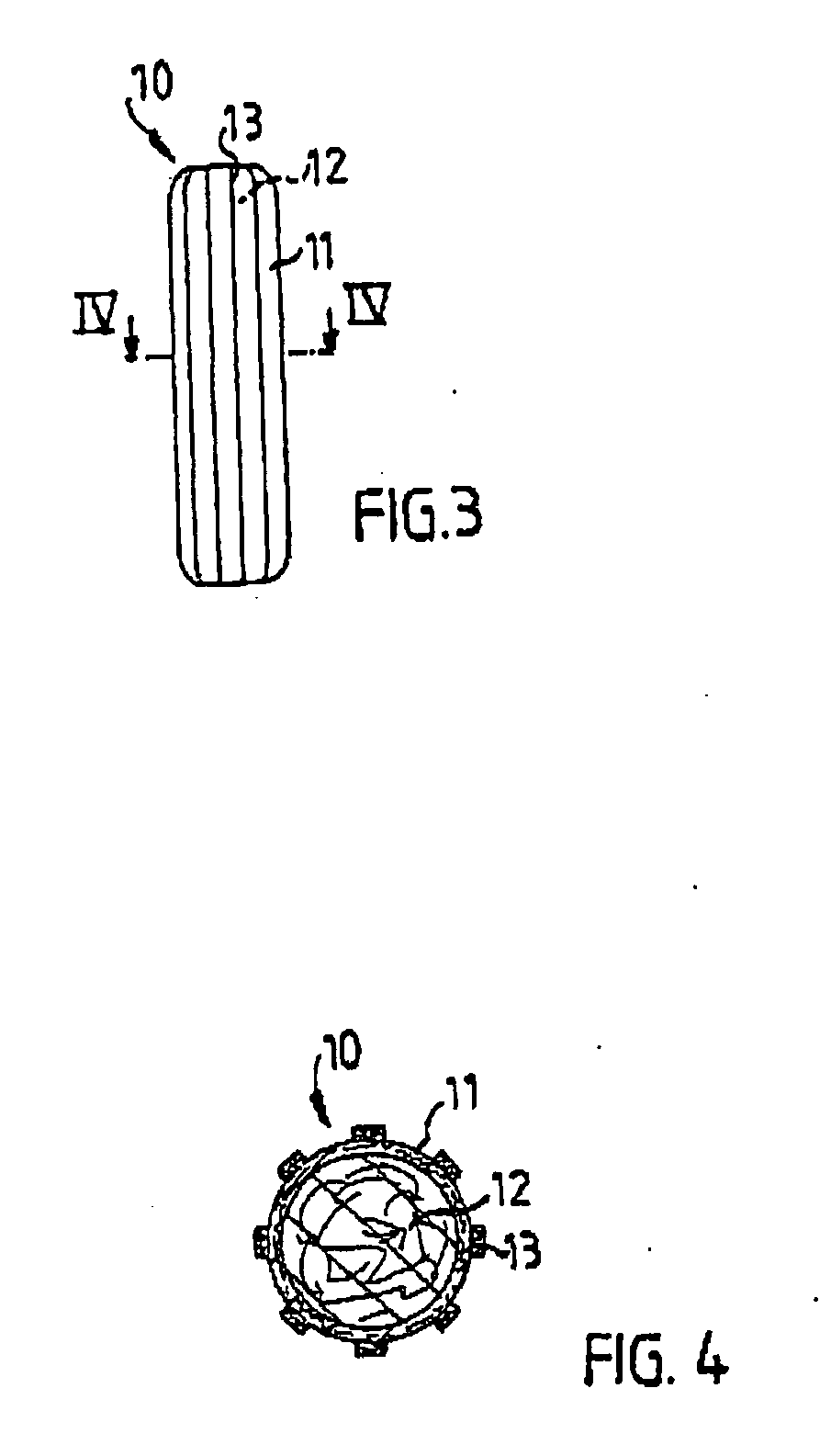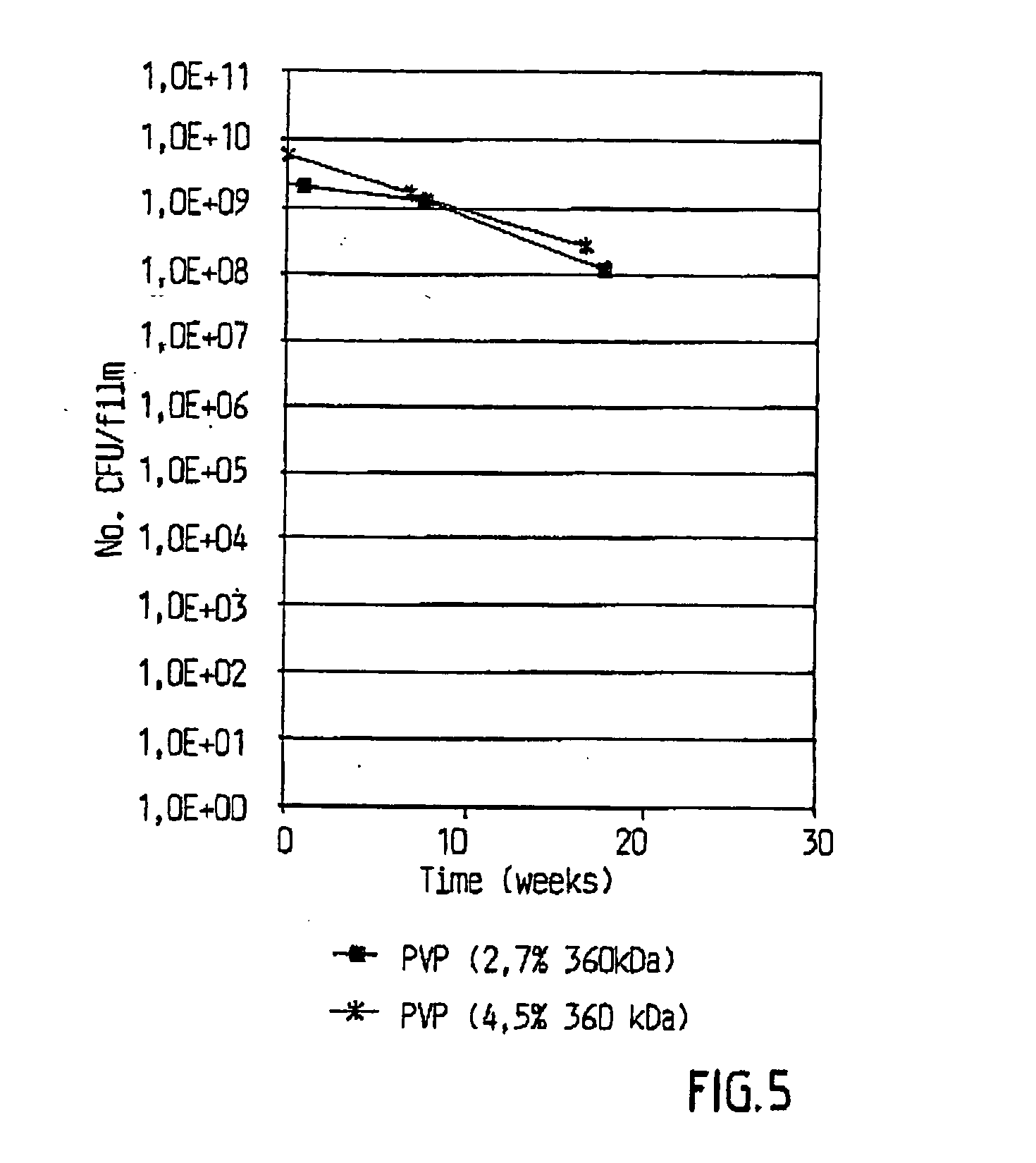Polymer matrix with lactic acid producing bacteria
a technology of lactic acid and polymer matrix, which is applied in the field of polymer matrix with lactic acid producing bacteria, can solve the problems of high transfer of bacterial cells to the skin of a subject, and achieve the effects of increasing bacterial survival, high transfer of bacterial cells, and increasing survival
- Summary
- Abstract
- Description
- Claims
- Application Information
AI Technical Summary
Benefits of technology
Problems solved by technology
Method used
Image
Examples
example 1
[0050] Production of a film-shaped polymer matrix comprising lactic acid producing bacteria.
[0051] An aqueous polymer solution with a concentration of 0.1-10% by weight is prepared by dissolving polyethylene oxide, polyvinyl pyrrolidone, polyvinyl alcohol or starch in water.
[0052] One part of bacterial suspension (ca 10.sup.10 CFU / ml, BioNativ AB, Box 7979, 907 19 Ume.ang., Sweden) comprising Lactobacillus plantarum 931 (deposition No. (DSMZ): 11918) is mixed with 9 parts of the polymer solution for 5 minutes. The mixture is poured into small Petri dishes in a quantity that ensures the right thickness and an amount of bacteria of approximately 10.sup.9 cfu / film-shaped polymer matrix. The resulting film-shaped polymer matrix comprising lactic acid producing bacteria has a thickness of preferably 50 .mu.m-5 mm, more preferably 100 .mu.m-1 mm and most preferably 500 .mu.m-1 mm.
[0053] The petri dish is placed in a climate chamber at a temperature of 37.degree. C. and with as low relativ...
example 2
[0056] Survival of L. plantarum 931 in film-shaped polymer matrices according to an embodiment of the present invention.
[0057] The film-shaped polymer matrix is placed in a climate chamber at 23.degree. C. and 50% relative humidity. The survival of the bacteria is tested in a film-shaped polymer matrix according to Example 1 further coated with Caremelt (a mixture of waxes, Cognis, Henkel KgaA, Dusseldorf, Germany). The survival of the bacteria in the film-shaped polymer matrix is tested at predetermined intervals for several months (see below).
[0058] To test the survival of the lactic acid producing bacteria in the film-shaped polymer matrix, the film is placed in a petri dish, immersed with 20 ml of NaCl (0.85%) and put on a shaking-device. After 40 minutes, the film-shaped polymer matrix is dissolved and the survival of the bacteria is determined by counting the number of colony forming units (CFU) by standard spread-plate techniques and cultivation on MRS agar (2 days of incubat...
example 3
[0059] Transfer of L. plantarum 931 from a panty-liner provided with a film-shaped polymer matrix.
[0060] Film-shaped polymer matrices comprising lactic acid producing bacteria are produced as described in Example 1. About 1 cm.sup.2 of film-shaped polymer matrix are cut out, weighed and placed on the nonwoven top layer of a panty-liner specimen (a circle 2.5 cm in diameter, punched out of an absorbent product).
[0061] 100 .mu.l of NaCl are added with a pipette to the absorbent product, comprising the film-shaped polymer matrix with bacteria, and the specimen is subsequently mounted, with constant pressure (elastic tape and elastic bandage), onto the forearm of volunteers. After 2 hours, the product is removed and the number of transferred Lactobacilli on the skin measured. A sterile stainless-steel cylinder (2.6 cm in diameter, height 2 cm) is held tight to the skin (that has been covered with the specimen), and 1 ml of phosphate buffer (0.1 M, pH 7.2) is poured into the cylinder. Wi...
PUM
 Login to View More
Login to View More Abstract
Description
Claims
Application Information
 Login to View More
Login to View More - R&D
- Intellectual Property
- Life Sciences
- Materials
- Tech Scout
- Unparalleled Data Quality
- Higher Quality Content
- 60% Fewer Hallucinations
Browse by: Latest US Patents, China's latest patents, Technical Efficacy Thesaurus, Application Domain, Technology Topic, Popular Technical Reports.
© 2025 PatSnap. All rights reserved.Legal|Privacy policy|Modern Slavery Act Transparency Statement|Sitemap|About US| Contact US: help@patsnap.com



